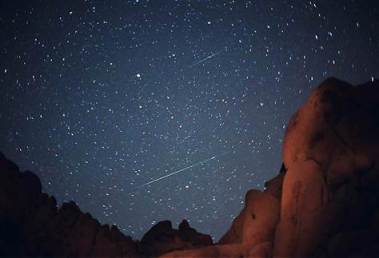Skywatching Highlights: April 2011
This month’s highlights:
- Saturn in the evening sky
- The 2011 Lyrid Meteor Shower
- Four Planets and a Crescent Moon in the morning sky
| Date | Event | Time (in PHT, UT+8) |
| 3 | New Moon | 22:30 |
| 5 | Saturn at Opposition
— The ringed planet will be at its closest approach to Earth and its face will be fully illuminated by the Sun. This is the best time to view and photograph Saturn and its moons. |
09:50 |
| 6 | Jupiter in conjunction with the Sun | 23:00 |
| 10 | Mercury in inferior conjunction | 04:00 |
| 11 | First Quarter Moon | 20:05 |
| 17 | Moon at perigee (nearest distance to Earth) | 14:00 |
| 18 | Full Moon | 10:45 |
| 21-22 | Lyrid Meteor Shower*
— The Lyrids are an average shower, usually producing about 20 meteors per hour at their peak. These meteors can produce bright dust trails that last for several seconds. The shower usually peaks on April 21 & 22, although some meteors can be visible from April 16 – 25. This year, the gibbous moon will hide most of the fainter meteors in its glare. Look for meteors radiating from the constellation of Lyra after midnight, and be sure to find a dark viewing location far from city lights. |
|
| 22 | Mercury-Venus-Mars-Jupiter visual alignment
— Visible from April 25 to May 30 |
dawn |
| 23 | Venus at Uranus at minimum separation (0.9 degrees) | dusk |
| 25 | Last Quarter Moon | 10:45 |
| 27 | Neptune 6 degrees south of the Moon | 21:00 |
| 29 | Four Planets and Crescent Moon in the morning sky
— On the last two mornings of the month, given a clear low eastern horizon, there will be four planets and a thin crescent Moon visible just above. You will need binoculars, so cease looking when the Sun has risen. |
dawn |
| 31 | Moon at apogee (farthest distance to Earth) | 02:00 |
*Check out the following links for more info:
- Lyrids Meteor Shower – AstronomyLive.com
- Lyrids Watch 2011 – GAM 2011 Events
- Lyrids – Spacedex.com
- Lyrids – MeteorShowersOnline.com
Lyrids Quick Facts:

The red dot shows the "radiant" for the Lyrid meteor shower. The radiant is the spot in the sky that the meteors seem to fan out from. (Image courtesy of NASA)
A video guide on finding the constellation Lyra:
HubbleSite – Tonight’s Sky: April 2011
Clear skies to all and happy observing! 🙂
=====================
References:
- PAGASA Philippine Astronomical Diary
- Philippine Celestial Events for 2011 by PAS
- SeaSky.org
- Stellarium Planetarium Software























